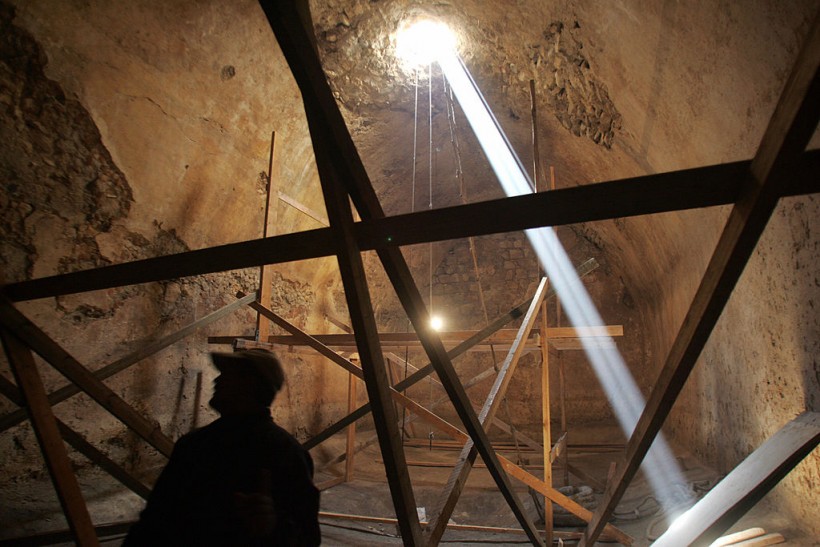During the excavation of an ancient Christian church in Istanbul, previously known as Constantinople, archaeologists discovered underground rooms and a tunnel dating back 1,500 years.
Although the exact purpose of these hidden structures remains unclear, Live Science reported that these chambers and tunnel are believed to be associated with the expansive Church of St. Polyeuctus, which was constructed during the city's prominent era as the center of Christianity, the official religion of the Byzantine Empire.

Workers renovate an ancient water cistern at the site of the Inn of the Good Samaritan Byzantine basilica, near the Israeli settlement of Maale Adumim on the edge of Jerusalem, 19 April 2006.
Ancient Chambers and Tunnels Open for Public Viewing
The recently discovered underground rooms and tunnel beneath the ruins of an early Christian church in Istanbul are believed to be connected to the church prothesis, where preparations for the Byzantine Christian rite of the Divine Liturgy took place. According to archaeologists, the underground chambers still display intricate decorations, such as mosaics, stone inlays, and carved marble blocks.
After being initially discovered during road construction in the 1960s, the underground rooms were concealed and their entrances filled to protect them. Located in the Saraçhane district at the heart of Istanbul, the area had been neglected over time.
However, the Istanbul Metropolitan Municipality (IBB) initiated a redevelopment project last year to revive the site and convert the extensive ruins into a tourist destination.
Mahir Polat, the Deputy Secretary-General of IBB, praised the architectural resilience of the structure, which has withstood the test of time and numerous earthquakes. As the Daily Sabah reported, Potat announced that the Saraçhane Archaeological Park will soon be open to visitors.
The ongoing excavations will allow visitors to witness the historical significance of the 1,500-year-old passage and learn about archaeology and the remarkable endurance of the structure despite seismic activities.
Polat highlighted that although the main structure of St. Polyeuktos was destroyed, its infrastructure remains intact, serving as a testament to Istanbul's earthquake history. The use of Horasan mortar, a significant technological feature of the period, was identified during the examination of surface samples in the laboratory.
The discoveries provide valuable insights into the architectural and historical significance of Istanbul, emphasizing the importance of preserving and learning from these remarkable ancient structures.
READ: Farmer Unearths an Ornate Byzantine Floor Mosaic in Gaza While Planting an Olive Tree
Byzantine Church Abandoned After an Earthquake
As per The Oxford Dictionary of Byzantium, the Church of St. Polyeuctus, constructed during the reign of Emperor Justinian in the 6th century, was once a grand and splendid church in Constantinople, rivaling the size of the Hagia Sophia. However, it fell into ruin over the years, damaged by earthquakes, and destroyed during the Crusaders' sack of the city in 1204.
Despite its destruction, remnants of the church, including ornate decorations and pillars, were dispersed to various locations such as Venice, Barcelona, and Vienna. During the Ottoman period, the ruins were covered and built upon.
Polat wrote to Live Science in an email that the survival of the underground structures beneath the church for centuries, despite numerous earthquakes in the region, indicates that many Byzantine buildings were designed to withstand seismic activity.
The excavation of the St. Polyeuctus ruins, part of a redevelopment project, aims to bring awareness and appreciation to this historically significant site.
RELATED ARTICLE: Cleopatra's Tomb Found? 4,800 Feet Tunnel of Rock May Lead to Remains of Egypt's Last Pharaoh and Lover Mark Antony
Check out more news and information on Archaeology in Science Times.














